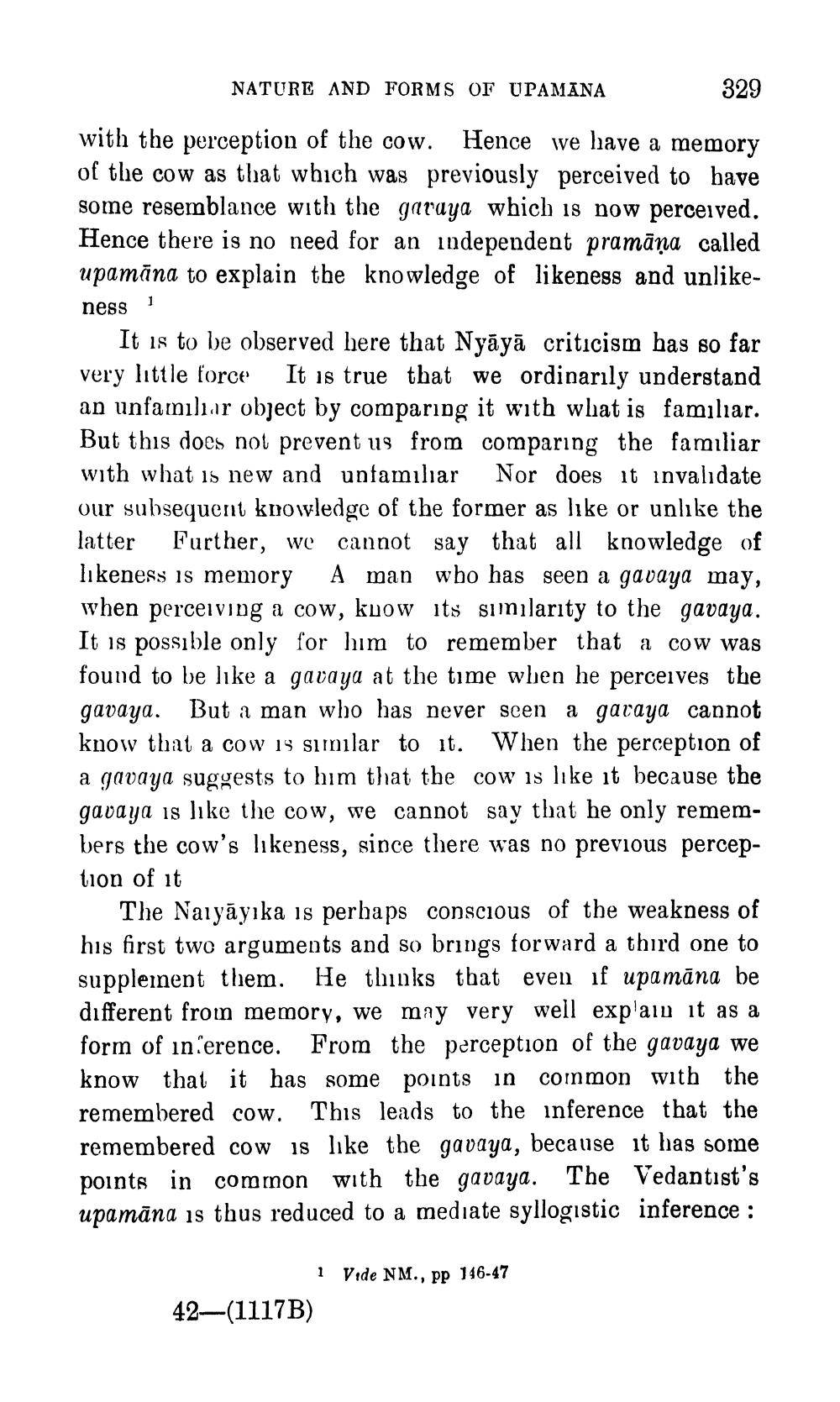________________
NATURE AND FORMS OF UPAMANA
with the perception of the cow. Hence we have a memory of the cow as that which was previously perceived to have some resemblance with the garaya which is now perceived. Hence there is no need for an independent pramāna called upamana to explain the knowledge of likeness and unlike
1
ness
It is to be observed here that Nyaya criticism has so far very little force It is true that we ordinarily understand an unfamiliar object by comparing it with what is familiar. But this does not prevent us from comparing the familiar with what is new and unfamiliar Nor does it invalidate our subsequent knowledge of the former as like or unlike the latter Further, we cannot say that all knowledge of likeness is memory A man who has seen a gavaya may, when perceiving a cow, know its similarity to the gavaya. It is possible only for him to remember that a cow was found to be like a gavaya at the time when he perceives the gavaya. But a man who has never seen know that a cow is similar to it. a gavaya suggests to him that the gavaya is like the cow, we cannot say that he only remembers the cow's likeness, since there was no previous perception of it
329
42-(1117B)
a gavaya cannot When the perception of cow is like it because the
The Naiyayika is perhaps conscious of the weakness of his first two arguments and so brings forward a third one to supplement them. He thinks that even if upamana be different from memory, we may very well explain it as a form of inference. From the perception of the gavaya we know that it has some points in common with the remembered cow. This leads to the inference that the remembered cow is like the gavaya, because it has some points in common with the gavaya. The Vedantist's upamana is thus reduced to a mediate syllogistic inference:
1 Vide NM., pp 146-47




